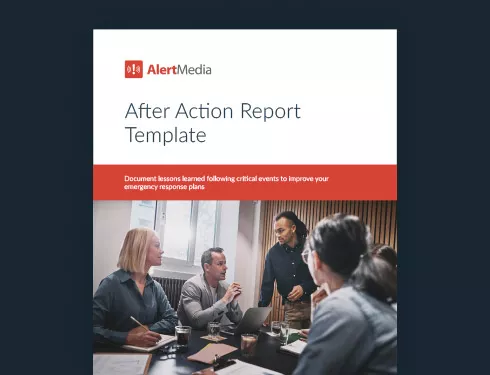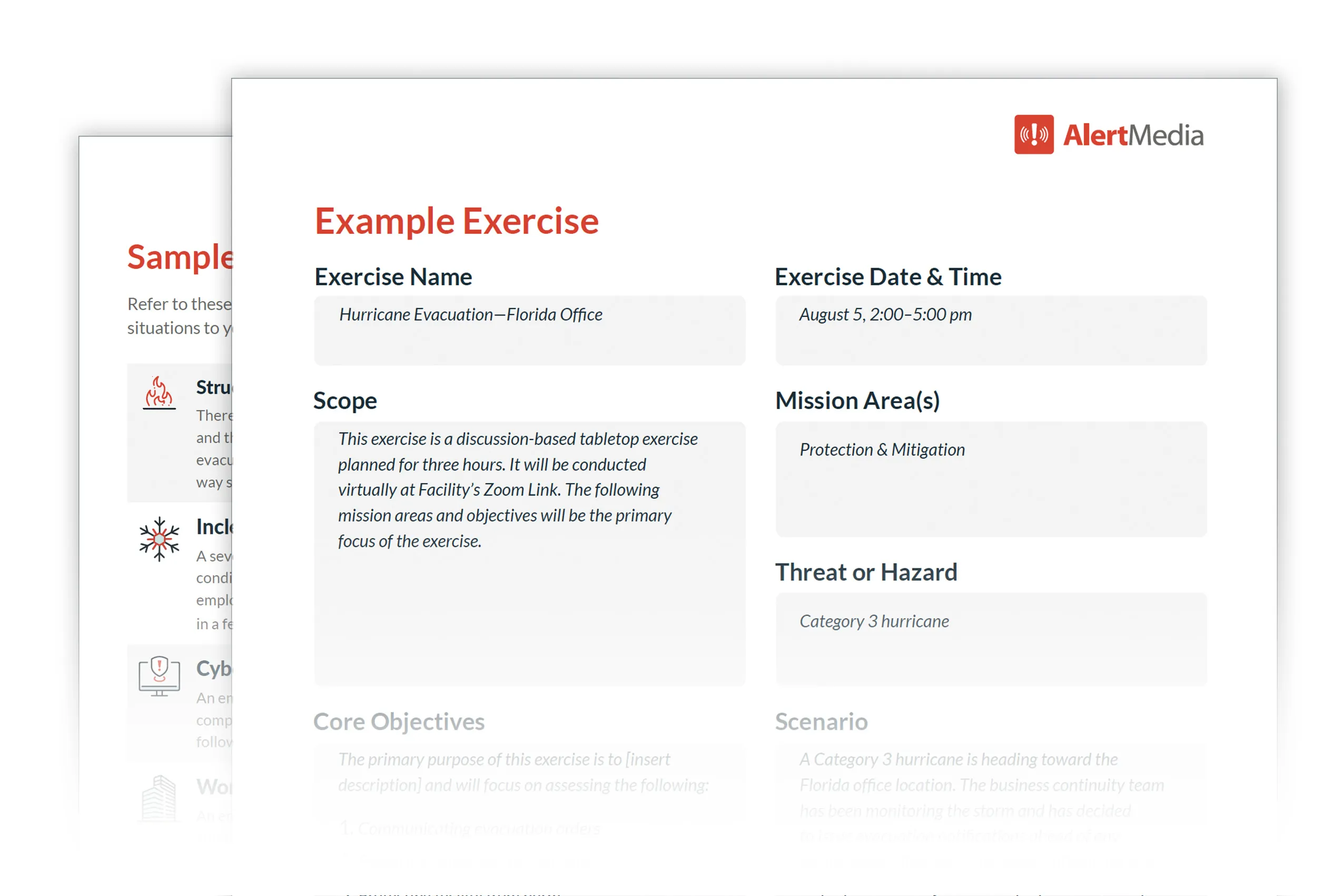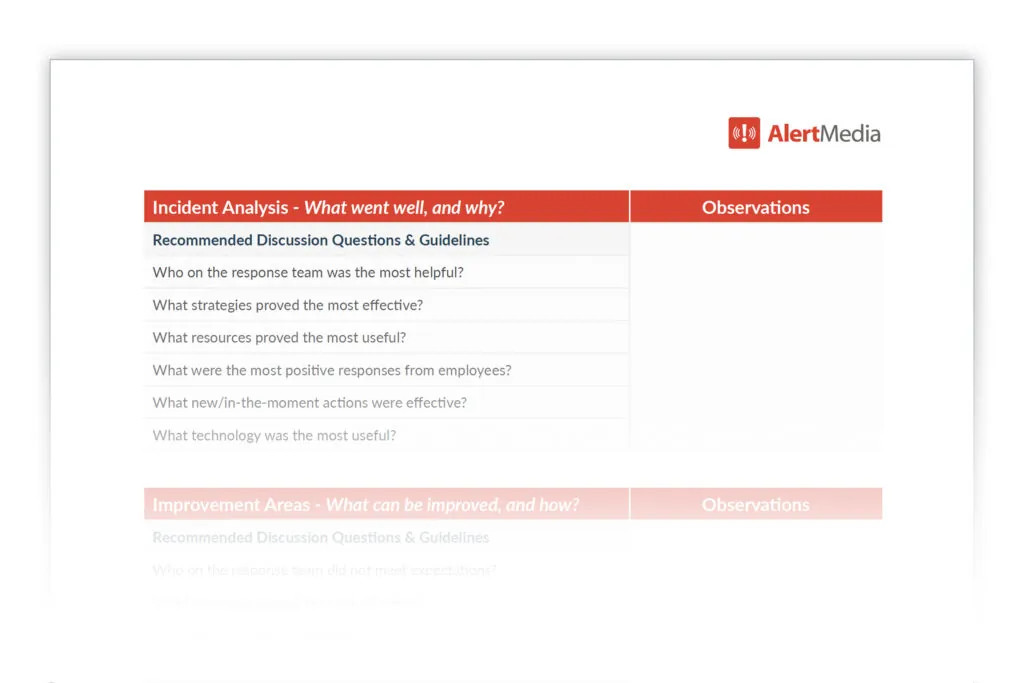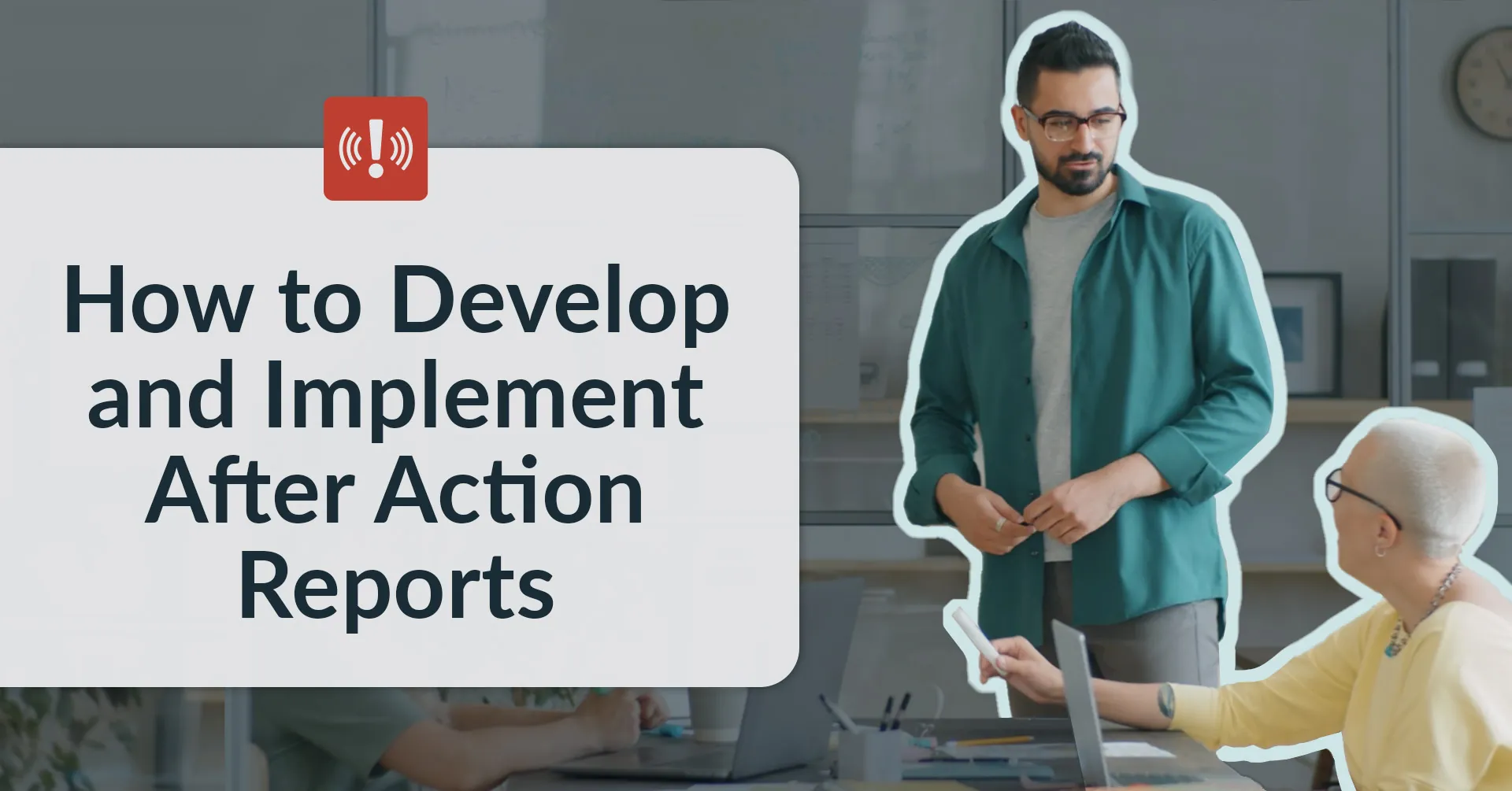
How to Write an After-Action Report [+Template]
Things don’t always go as planned, but even in failure lies opportunity. Learn how to use an after-action report format to improve your safety processes with clear action steps and examples to ensure high-quality emergency response for the next time.

You don’t ever want to make the same mistake twice when lives and business continuity are at stake. But there’s not always time to analyze the effectiveness of your emergency response when you are in the thick of the action. Instead, when the dust settles, a good way to improve your plans is to use an after-action report.
Stan Szpytek, President and CEO at Fire & Life Safety, Inc., explains on The Employee Safety Podcast how the simple after-action report format can elevate your emergency response. “If you experience your own incident, even if it didn’t turn out to be a major catastrophe, my advice to you is always do an after-action review and develop an after-action report where you can cite your strengths, your vulnerabilities, your gaps, your opportunities for improvement, and then make changes to your plans based on what people have learned.”
Capture lessons learned from training drills, tabletop exercises, and emergency events alike with an after-action report. This post will walk you through how to how to create your own AAR that can help your business break down how things went and then lay out an action plan to improve your preparedness and response for next time.
Preview of AlertMedia’s After-Action Report Template
Download Our After Action Report Template
What Is an After-Action Report (AAR)?
An after-action report—also known as a post-action report—is a strategic document internal stakeholders use to summarize observations and key takeaways following a drill or an actual event that impacts the business. The objectives of an after-action review process are to ascertain vital details: how the event went, what went well, and areas for improvement. This thoughtful AAR process leads to a concrete plan for improving the response should another similar incident occur.
After-action reports are used commonly by safety and business continuity professionals. They are an essential tool used to reflect on preparedness drills and support emergency management by ensuring that the business is ready and has learned from past mistakes before an emergency occurs.
Even if real emergencies aren’t occurring to test your plans, you can run practice drills and tabletop exercises followed by post-action reviews. These exercises allow your organization to identify gaps in your response plans, learn from mistakes or oversights, and be better prepared before an emergency.
Learn a step-by-step framework for developing an after action report to ensure your organization is prepared for any emergency scenario.
Why After-Action Reports Should Be Standard Protocol
Nearly every business will experience an emergency or unplanned event that impacts employee safety or the bottom line—which is why emergency preparedness and business continuity are foundational components of organizational resilience planning. But you come by preparedness and continuity only with diligent practice and procedure updates. Resilience comes with experience, awareness, and adaptation.
Compared to a more formal postmortem or tabletop exercise overview, an after-action report goes beyond general reflection and includes a tactical plan for preparing your business to act next time. The plan lists specific responsible parties and due dates, so action items are clear and easy to follow through on.
These reports can also be maintained and updated over the course of several drills and events so you can track trends. If you see the same problems coming up repeatedly, you know you need to pay special attention to improving that aspect of your response plan.
Prepare to Review Your Response
Before meeting to review your emergency response, clarify your intentions for the exercise and the people and parameters that will make it successful.
Establish the intent
You need to be clear on the end goal as you’re answering reflection questions.
Are you trying to prevent this type of incident from happening again? Are you trying to understand the cause of a misstep or breakdown in the process? Are you tracking the time needed for an emergency response or drill to accelerate response times in the future?
Knowing what you hope to accomplish will help you give more impactful answers in your report.
Identify exercise participants
A comprehensive after-action report involves all critical stakeholders in the conversation. Before you set up your discussion meeting, consider who needs to contribute to the review and report creation.
Which departments and personnel were impacted by the incident or involved in executing the response plan? Who was involved in decision-making? Was there a point of contact? Who provided data or evidence to understand the location, scale, and impact of the event?
If you also played a key role in executing the emergency response plan, consider inviting an external facilitator to moderate the discussion and ensure your inputs are captured in the after-action report.
Determine logistics
Meeting logistics are a critical yet often overlooked component of developing after-action reports. This step is especially important if your business is a remote or hybrid work environment. For some businesses, an in-person meeting will facilitate the best conversation. For others, virtual meetings can be just as effective. You also need to consider the number of participants. Regardless of the meeting format or location, be sure to schedule ample time to allow all stakeholders to go through the drill or incident thoroughly, ask probing questions to identify the root cause of issues, and document lessons learned before adjourning.
Set ground rules
When discussing critical events—particularly incidents that impacted personal safety or caused prolonged disruptions—you must have ground rules that facilitate an open and honest discussion. For example, you might set the expectation that
- All answers will be taken seriously
- Participants should be honest and respectful
- All statements will be kept anonymous
- No ideas should be discounted or shut down without posing alternative solutions
Document and distribute these rules to all team members and review them before starting the meeting.
How to Write an After-Action Report
It’s best to understand the building blocks of an AAR inside and out. The four parts of an after-action report/improvement plan are
- Post-incident recap
- Incident review
- Incident analysis
- Potential areas of improvement
1. Post-incident recap — In this scenario, what was expected?

In the first stage, you’ll discuss what was expected from your team leader and project team and the goals of the drill—or if you are analyzing an emergency event itself, you’ll discuss what you expected to happen in this kind of scenario.
Ask questions such as: What resources did we have available? Could we have predicted this event before it happened? What responsibilities did leaders have during the event?
2. Incident review — What actually occurred?
The second stage is the review of what actually happened. Go into detail about the event, who responded, what/when events occurred, etc. Make sure every participant has an opportunity to share their experience.
3. Incident analysis — What went well, and why?
The third step is to go through the good elements of your response. Were there employees who went above and beyond? Was there a notably helpful piece of technology?
Recall what went well so you can replicate or expand that response for the future.
4. Potential improvements — What can be improved, and how?
In the fourth step, review the elements that did not meet expectations or standards for success. These may be communication breakdowns or problems in the response strategy itself or any other challenges. Be sure to discuss these areas for improvement without assigning blame or attacking any of the stakeholders or participating organizations. With this after-action report, you can be sure not to repeat issues.
Once you have collected all your observations and conclusions from these four report elements, compile a list of action items and assign each to a responsible party. These items can be as simple as updating documents or as vital as setting up an emergency communication system. These corrective actions should support the measures discussed in the incident analysis and prevent future failures.
Action items & follow-up
Even after putting in all the work to create the report, you can’t assume everything will be done according to plan. Develop metrics to track the progress of the changes and check in frequently with those responsible. Continue to run regular drills and iterate on your after-action reports.
After-Action Report Examples
Diverse organizations have found success with after-action reports, and many of these organizational templates are available online for free. Be advised that relying on someone else’s plan might not work for your company, but the following examples can offer inspiration and ideas for your own AAR format.
Looking Inward, Facing Outward
It can be easy to write off emergency events as accidents or one-offs—something that probably won’t affect your business moving forward. But you’re more likely to have holes in your plan and repeat mistakes without a standard way to process and understand the plan’s effectiveness in real time. When you take the time to reflect, analyze, and improve, you’ll develop better strategies and prepare resources for those moments when you need to act fast and face the disruptions the world throws at you.




![4 Steps to Conduct a Business Threat Assessment [+ Template]](https://www.alertmedia.com/wp-content/uploads/2022/07/Blog-Image-Business-Threat-Assessment-V1.jpg)

